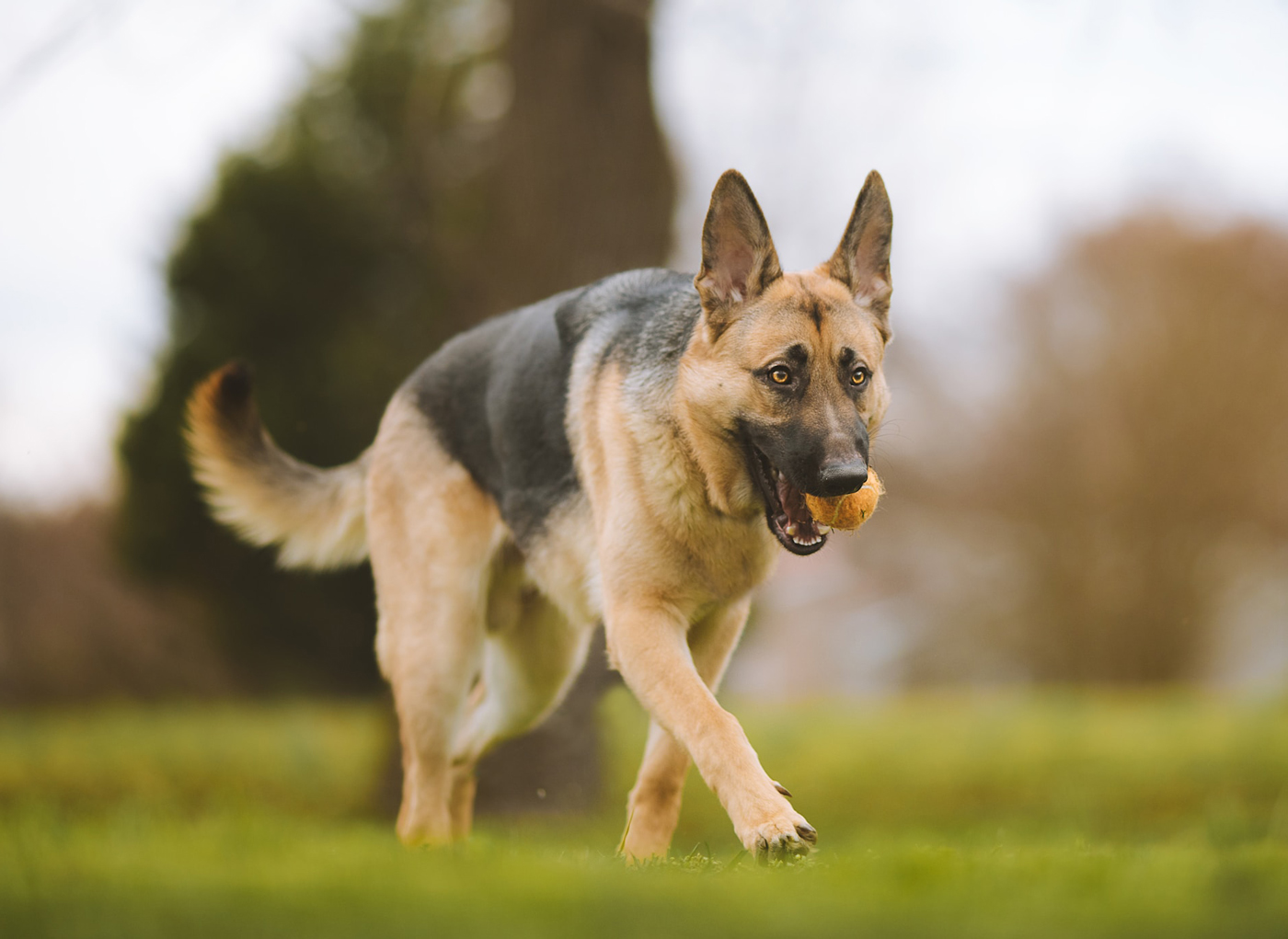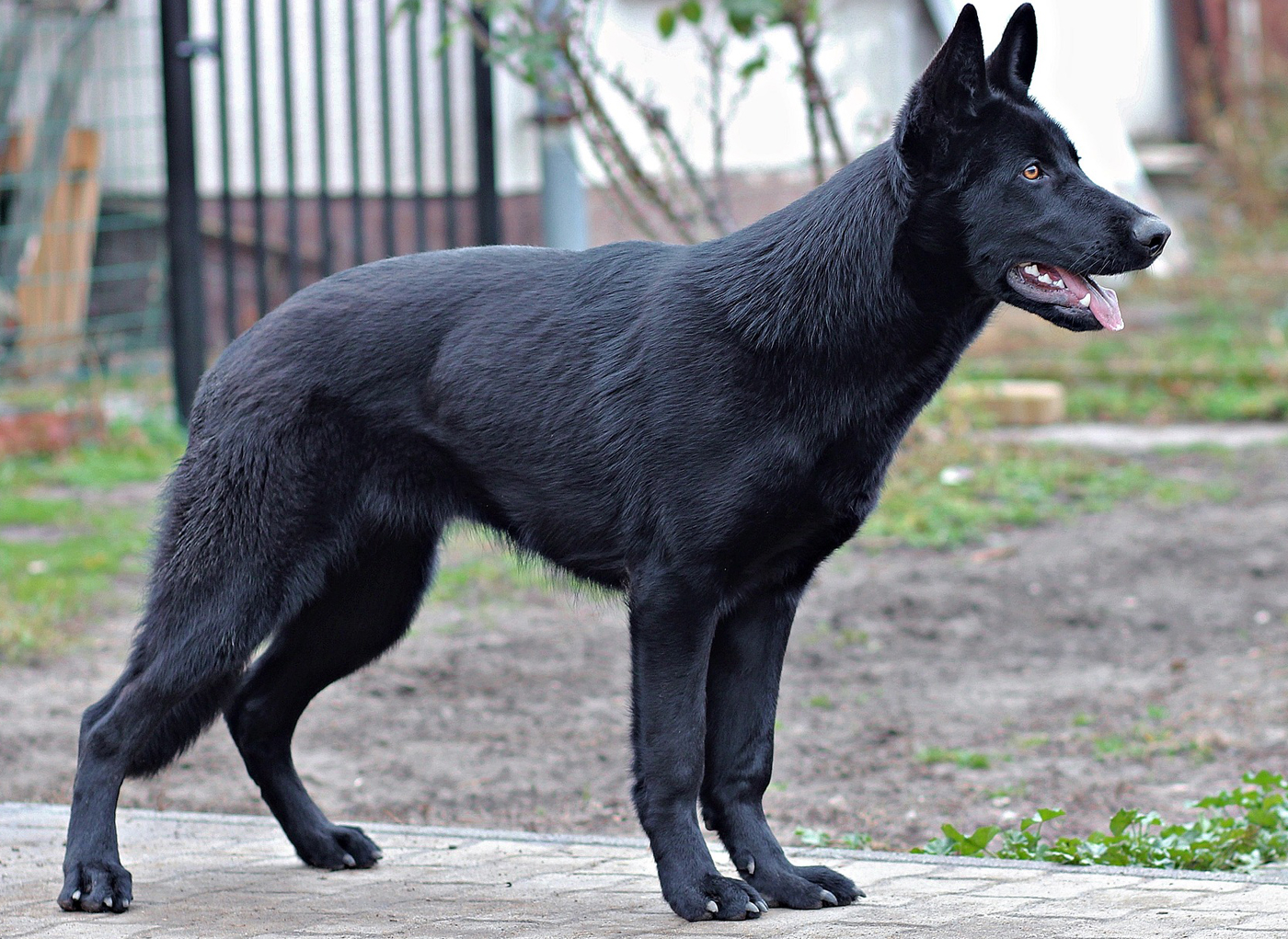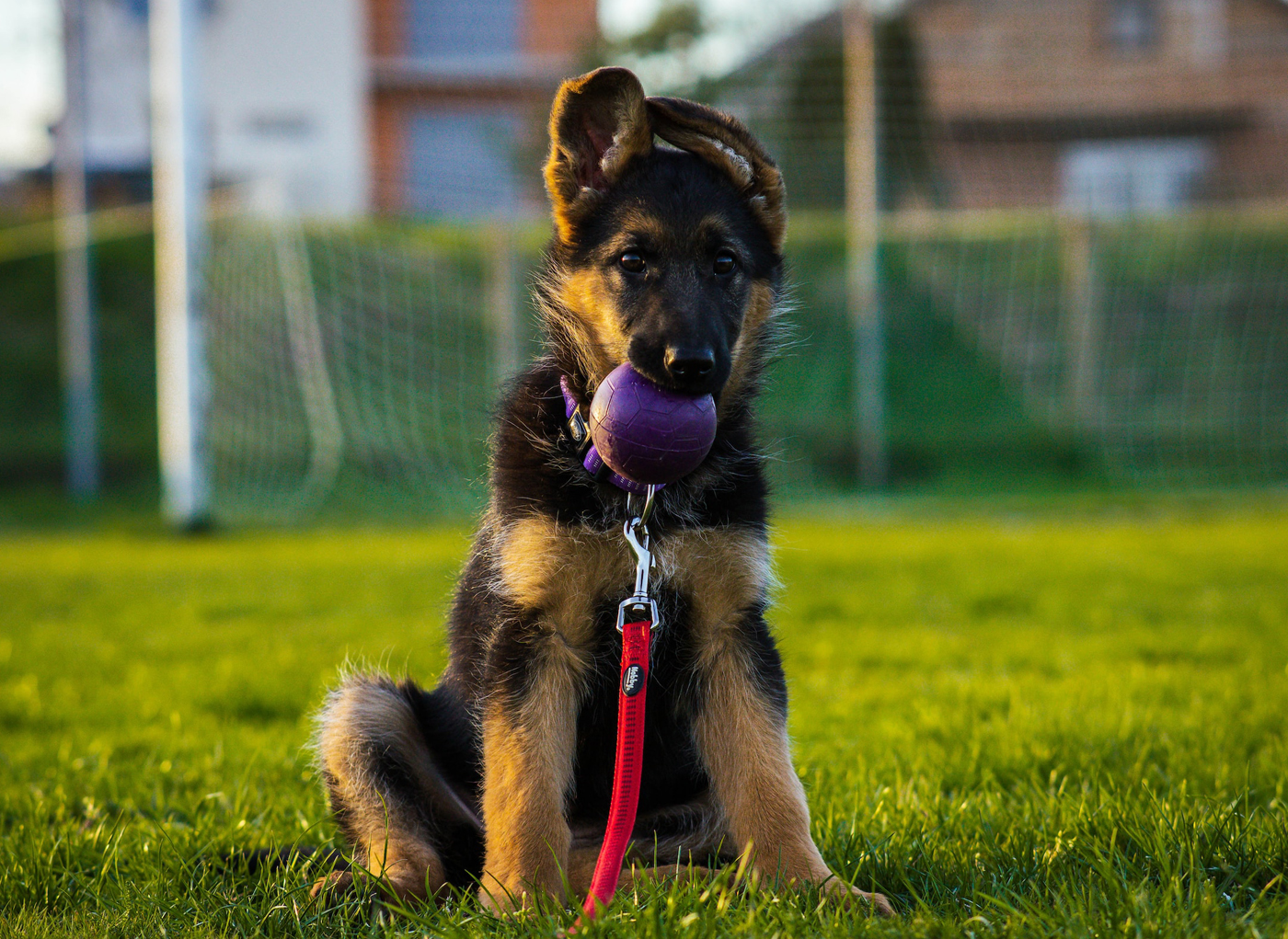
Photo: Reba Spike on Unsplash
Jump To Section
History
The German Shepherd Dog is a dog breed originating from old German farm dogs. The roots are believed to reach all the way to the Bronze Age. Remains have been found from said time period that resemble the modern day German Shepherd Dog. These ancestor dogs may have had wolf in them.

Man with three German Shepherd dogs at the Brisbane Exhibition, 1947. Photo: Truth (Brisbane, Qld. Newspapers). Location: Brisbane, Queensland.
In 1899 Verein für Deutsche Schäferhunde (the German Shepherd Dog Club of Germany) was established by Captain Max von Stephanitz and Arthur Meyer. The same year von Stephanitz discovered Horand von Grafrath (previously named Hektor Linksrhein), a dog that became the first registered German Shepherd and the forefather of the breed.
The German Shepherd Dog was originally bred as a shepherd and a protector of livestock. Eventually the breed became a “Jack of all trades” kind of dog that is able to perform various tasks, even challenging ones.
The German Shepherd Dog breed gained popularity fast and it is known as the most popular dog breed in the world.

Photo: Inge Van den Heuvel
The name “German Shepherd Dog” is a translation of the breed’s German name. Throughout history some countries have used other names for the breed as well. This is due to the time period of early 20th century, World Wars and the objective to stay away from the term “German”. For instance, there was a time when England opted for the name “Alsatian Wolfdog” for the breed.
Pop-culture has also acknowledged the German Shepherd Dog breed. Many tv-shows and movies have featured these dogs in their cinematography. Viewers may be familiar with Rin Tin Tin and Inspector Rex, for example.
Today the German Shepherd Dog is a versatile working dog valued around the world. Not only do German Shepherds make ideal assistants for the police, military and customs workers, but they are also being used as guide dogs, herding dogs, guard dogs, service dogs and search and rescue dogs. Besides being a working dog, the German Shepherd Dog also lives as a beloved companion dog in many families.
Appearance

Photo: Hans-Günther Schöner, Public domain, via Wikimedia Commons
The German Shepherd Dog is a muscular medium to large size dog with proportional features. The dog’s appearance is bred to be noble, strong and agile. A male GSD weighs 30-40kg (66-88lb) while females weigh 22-32kg (49-71lb). In terms of height a male German Shepherd Dog measures up to 60-65cm (24-26″) at the withers while females measure around 55-60cm (22-24″).
The muzzle of a German Shepherd Dog tapers towards the dog’s black nose and the almond shape eyes of medium size are able to convey the dog’s confident nature. The tail is somewhat curved with hairs that are described as bushy. A mature dog’s ears are carried erect.

Photo: Julissa Helmuth

Photo: Sofia Guaico on Unsplash
According to the FCI breed standard, the German Shepherd Dog comes in two different coat types; double coat as well as long and harsh outer coat.
There where the double coat version has a dense outer hair that lies close to the dog’s body, the hairs are longer and fluffier on the long and harsh outer coat version. In this latter version there are also collections of longer hairs on the dog’s ears, legs and tail.
In both coat types, the hairs on the dog’s face and front of the legs are described as short. The neck hair is described as being rather full. Both coat types have a double coat.
Colors include black with tan markings that can be in the shade of red, brown, yellow or light gray. Solid black and wolf-like gray with or without tan markings exists as well. Faded colors like blue or liver are not favorable and together with the color white can’t be shown in conformation showing.
Random Fact
The German word “Schäfer” means “Shepherd”.

Photo: Yama Zsuzsanna Márkus, CC0, via Wikimedia Commons
Temperament
An ideal German Shepherd Dog is confident and brave rather than shy or nervous. The dog’s intelligent and attentive nature makes them keen learners.
Strangers may get the cold shoulder as the breed is described as being aloof and indifferent toward unfamiliar people. Toward the owner the breed is described as loyal and faithful. They can also be protective due the their guarding instinct.
Aggressive behavior can occur toward other dogs.
Health
The German Shepherd Dog typically has a lifespan of 9-13 years.
Potential health concerns may include issues such as hip dysplasia, elbow dysplasia, allergies, bloat or gastric dilatation-volvulus (GDV), exocrine pancreatic insufficiency, back problems and panosteitis.
Should one be considering of becoming a GSD owner, it is advisable to research the breed’s current health concerns with care.
Care, Exercise And Grooming
Under the right care, the German Shepherd Dog is generally considered to be trainable as they are both intelligent and willing to please. In inexperienced hands these dogs can be a handful.
Daily mental and physical stimulation should be provided for a happy German Shepherd Dog. Should the owner be unable to offer enough activities for their dog, a bored German Shepherd may come up with unwanted behaviors for entertainment.
The German Shepherd Dog is a dog breed that sheds a lot, so brushing is a must. This is especially true during shedding season.
Similarly to all other dogs, also the German Shepherd Dog’s nails, teeth, ears and overall upkeep with the dog’s well-being is needed. Regular checkups at the vet for vaccinations and other health related matters must be provided. Proper socialization is also a necessity for every dog no matter the breed.
A well raised German Shepherd Dog will make a hard-working dog suitable for numerous dog jobs or a loyal family member.
References
1. 50 hundar. Sveriges populäraste hundraser. Tukan förlag 2016.
ISBN: 978-91-7617-733-4
2. American Kennel Club. The Complete Dog Book (p. 852). Random House Publishing Group. Kindle Edition.
eISBN : 978-0-307-41699-5
3. Åsa Lindholm, Ulla Barvefjord. Hundraser I Sverige. Prisma 2007.
ISBN: 978-91-518-4927-0
4. Coile Ph.D., Caroline. Encyclopedia of Dog Breeds (p. 3). Sourcebooks. Kindle Edition.
eISBN: 978-1-4380-6792-6
5. FCI-Standard N° 166, Fédération Cynologique Internationale website, <https://www.fci.be/Nomenclature/Standards/166g01-en.pdf>.
6. Koirarodut Suomessa. Maarit Laaksonen. Otava 2017.
ISBN: 978-951-1-31430-1






